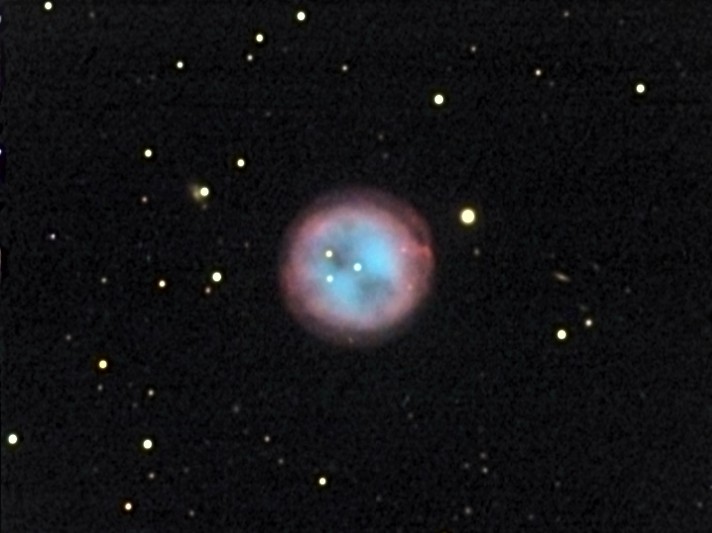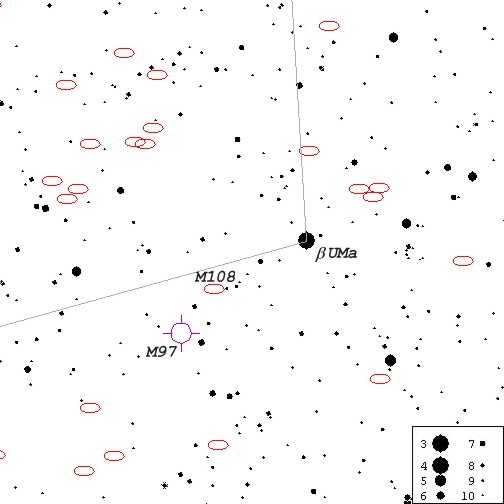
M97 = NGC3587 ( 11h 14.8m +55°01´, 11.2 mag. )

Owl Nebula was discovered by Mechain on February 16, 1781 and Messier observed it on March 24 same year. The name, however, comes from Lord Rosse's impression of M97 in his giant reflector. This old planetary nebula in Ursa Major is located abot 1,600 ly away and measures 1.5 ly across. Its 14 mag. central star has temperature of 85,000K. While M97 is frequently considered by some to be one of the most difficult Messier objects, I found it easy to spot in 6 inch telescope under dark sky - M108 nearby was significantly harder, not to mention M76 in Perseus. Look for Owl Nebula 2°15' SE of b Ursae Majoris (see finder chart below).
Their are quite a few field galaxies around M97. The brightest of them is PGC34279 shining at magnitute 17 next to star in the upper left sector of the above image (3.5' SSE of planetary nebula's central star - magnitude 16.0). Visually, PGC34279 may be within the reach of 20 inch telescope!
The above image was taken on April 13, 1999 from Sooke, BC. Cookbook 245 LDC CCD camera was used on Celestron Ultima 8 f6.3 telescope autoguided with Cookbook 211 LDC CCD camera on piggybacked 500mm f8 telephoto lens. Nine white exposures (240 sec. each) as well as cyan, magenta and yellow-filtered integrations (4 x 240 sec., 4 x 240 sec. and 3 x 240 sec., respectively) were combined with AIP4WIN. Color image was then adjusted in Lab color space using Corel PhotoPaint 8.
North is to the right.

Map created in Guide 7.0 - 7°45' x 7°45'. North is up.
Number of visitors:
© Jan Wisniewski